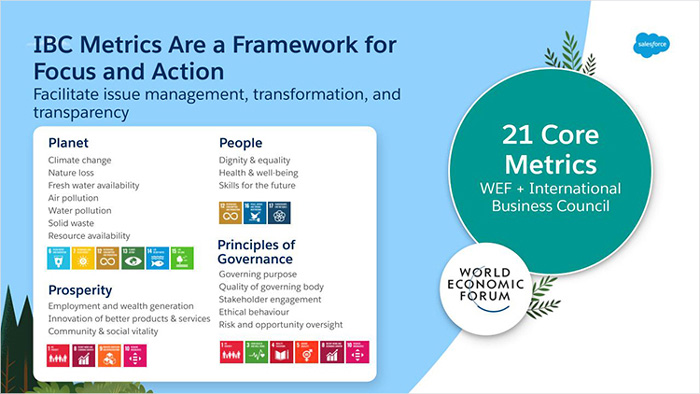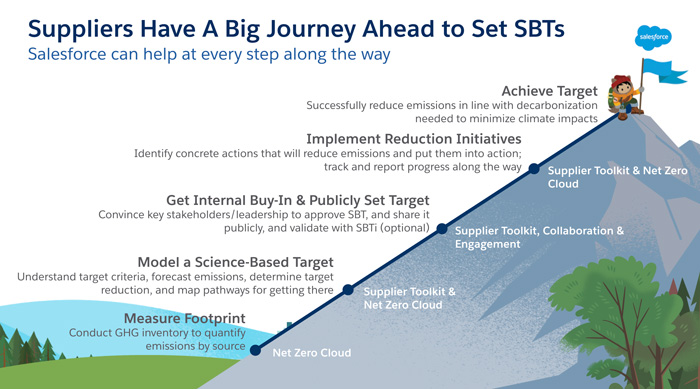As climate change continues to impact human health and lives, corporate India must take proactive steps to measure and reduce the environmental impact of their business activities.
“Business is the greatest platform for change.”
Fortunately, awareness of climate change mitigation, emission risk hedging, and carbon accounting has increased since 2009 – thanks to government initiatives like the India Green House Gas (GHG) Program, led by the World Resources Institute (WRI) India, Confederation of India Industry (CII), and The Energy and Resources Institute (TERI).
Under the Paris Agreement, India has three quantitative goals to achieve by 2030:
- Reduce emissions intensity by 33-35% below 2005 levels
- Derive 40% of electric power capacity from non-fossil fuel sources
- Create an additional carbon sink equivalent to 2.5-3 billion tonnes of CO2 through additional forest and tree cover
Aligning with India’s commitment, 24 top companies – including Reliance, Tata, Mahindra, ITC, ACC, Adani, and Dalmia Cement – have signed a declaration, pledging to move towards carbon neutrality. But those companies with a large carbon footprint still need to do more through their environmental, social, and governance (ESG) programs.
What makes carbon accounting so challenging for corporate India?
Carbon accounting is no longer just a ‘nice-to-have’ – it’s an industry standard requirement. Investors, policymakers, and consumers are increasingly demanding transparency around corporate carbon footprints. Yet many companies fall short of meeting these demands due to:
- Difficulties translating global temperature goals into individual actions
- Uncertainty about where to begin and how to build a business case for carbon accounting
- Lack of a robust carbon accounting solution to help categorise scope 1, 2, and 3 emissions
- Poor visibility for auditors to quantify carbon neutrality efforts
- Lack of support and incentives from appropriate stakeholders
- Limited environmental awareness and accountability within organisations
- No single standard or methodology to calculate carbon emissions
- Not enough data on emissions – particularly scope 3 emissions associated with suppliers, investors, and upstream or downstream activities
Salesforce Net Zero Cloud can help your company solve these challenges by making it simpler to track, analyse, and report emissions. You gain a complete view of your energy consumption and carbon footprint, along with a clear responsibility matrix. This helps your Chief Sustainability Officers and other executives take tangible steps towards achieving carbon neutrality.
5 reasons to consider Net Zero Cloud for your ESG initiatives

Net Zero Cloud is mobile-first and can integrate with multiple third-party databases to extract actionable insights. Unlike spreadsheets and other unstructured systems of record, Net Zero Cloud provides accurate, transparent, and investor-grade data that executives can confidently act on.
2. Strengthen compliance with IBC Metrics: The World Economic Forum (WEF) and International Business Council (IBC) have chalked out 21 core metrics for sustainable value creation across four key Principles: Planet, People, Prosperity, and Governance. The idea is for companies to use these metrics to communicate their sustainable business performance and value creation to investors and other stakeholders.
Net Zero Cloud comes integrated with the IBC metrics framework. So, you can easily track, measure, and monitor business performance against any of the 21 metrics. Data on pollution, waste, community activities, equality, health, and more are pulled in from backend systems, enabling you to efficiently categorise and quantify the data for reporting.

3. Simplify the calculation of scope 3 emissions: Organisations are expected to calculate their emissions across three ‘scopes’:
- Scope 1: Direct emissions
- Scope 2: Indirect emissions from purchased and acquired energy
- Scope 3: Indirect emissions from the organisation’s value chain
Many corporates have figured out how to manage scope 1 and scope 2 emissions. But scope 3 is where things can get challenging because it encompasses emissions across the entire value chain.
Salesforce can help by categorising scope 3 emissions across 15 upstream and downstream categories (see diagram below). It uses EEIO (Environmentally-Extended Input-Output) models to measure upstream drivers of downstream CO2 emissions. This makes it simpler for you to track and report the environmental impact of value chain activities.

4. Tackle supplier emissions monitoring with ease: The next wave of carbon accounting will focus on reporting emissions in the supply chain. We’ve already made that a priority at Salesforce. In FY20, 78% of our Total Greenhouse Gas emissions came from suppliers. Upstream emissions reduction has now become especially relevant to our climate action activities.
The 2018-19 CDP Supply Chain Report found that the average company’s supply chain GHG emissions are 5.5 times greater than their own direct environmental impact.
Now you can effectively track and report these emissions with our supplier toolkit and Net Zero Cloud. The entire supplier journey – right from onboarding and contract management, to engagement and performance management – can be managed and mapped against energy consumption patterns to keep emissions in check.

5. Meet your organisation’s wider sustainability goals: With a few clicks, you can start building applications on the Salesforce platform to bolster your sustainability efforts. These applications include:
- Point solutions for health and safety management
- CSR applications to track social initiatives and their impact
- Solutions for environmental course training, certification tracking, and permit management
Salesforce AppExchange provides a number of readymade EHS and sustainability solutions, including Carbon Projects, Contracts & Credits, and Environment, Health & Safety Solutions eg. ComplianceQuest and ESG Collect, to name a few.
Climate change is one of humanity’s most pressing concerns. Mitigating its effects will require widespread collaboration.
Join global efforts to combat climate change by using Net Zero Cloud to quantify your emissions, accelerate your carbon accounting audits, and strengthen decision-making around sustainability.
Let’s build a better future together.




